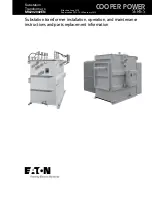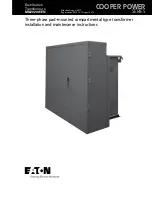
10
FT-847 O
PERATING
M
ANUAL
A
NTENNA
C
ONSIDERATIONS
Installation
The antenna systems connected to your FT-847 trans-
ceiver are, of course, critically important in ensuring
successful communications. The FT-847 is designed
for use with any antenna system providing a 50
Ω
re-
sistive impedance at the desired operating frequency.
While minor excursions from the 50
Ω
specification
are of no consequence, the power amplifier’s protec-
tion circuitry will begin to reduce the power output of
there is more than a 50% divergence from the speci-
fied impedance (less than 33
Ω
or greater than 75
Ω
,
corresponding to a
S
tanding
W
ave
R
atio (SWR) of
1.5:1).
Four antenna jacks are provided on the rear panel of
the FT-847, using two different types of connectors.
Three of these jacks are “Type M” (SO-239) jacks;
these are the
HF
,
50
MHz
, and
144 MHz
jacks. The
other jack is a “Type N” jack, which is the
430 MHz
jack.
The center pins of these two jack types are of very
different diameters, and damage (not covered by your
transceiver’s Limited Warranty) will be caused if you
attempt to connect a Type M (PL-259) plug to the
430
MHz
Type N jack. It is best to confirm
visually
that
you are connecting your coaxial cables to the correct
jacks.
Guidelines for successful base and mobile station in-
stallations are shown below.
Base Station Antenna
Installations
When installing a “balanced” antenna such as a Yagi
or dipole, remember that the FT-847 is designed for
use with an (unbalanced) coaxial feedline. Always
use a balun or other balancing device so as to ensure
proper antenna system performance.
Use high-quality 50
Ω
coaxial cable for the lead-in to
your FT-847 transceiver. All efforts at providing an
efficient antenna system will be wasted if poor qual-
ity, lossy coaxial cable is used. Losses in coaxial lines
increase as the frequency increases, so a coaxial line
with 0.5 dB of loss at 7 MHz may have 6 dB of loss at
432 MHz (thereby consuming 75% of your
transceiver’s power output!). As a general rule, smaller-
diameter coaxial cables tend to have higher losses than
larger-diameter cables, although the precise differences
depend on the cable construction, materials, and the
quality of the connectors used with the cable. See the
cable manufacturers’ specifications for details.
For reference, the chart below shows approximate loss
figures for typically-available coaxial cables frequently
used in HF installations.
C
ABLE
T
YPE
L
OSS
1.8 MHz
2 8 M H z
4 3 2 M H z
RG-58A
0.55
2.60
>10
RG-58 Foam
0.54
2.00
8.0
RG-8X
0.39
1.85
7.0
RG-8A, RG-213
0.27
1.25
5.9
RG-8 Foam
0.22
0.88
3.7
Belden 9913
0.18
0.69
2.9
7/8" "Hardline"
<0.1
0.25
1.3
Loss in dB per 30m (100 feet)
for Selected 50
Ω
Coaxial Cables
(Assumes 50
Ω
Input/Output Terminations)
Loss figures are approximate;
consult cable manufacturers'
catalogs for complete specifica-
tions.
Содержание FT-847
Страница 7: ...5 FT 847 OPERATING MANUAL Plug Pinout...
Страница 21: ...19 FT 847 OPERATING MANUAL Installation NOTE...
Страница 44: ...42 FT 847 OPERATING MANUAL OPERATION NOTE...
Страница 51: ...49 FT 847 OPERATING MANUAL OPERATION CW TRANSMISSION...
Страница 67: ...65 FT 847 OPERATING MANUAL OPERATION NOTE...













































